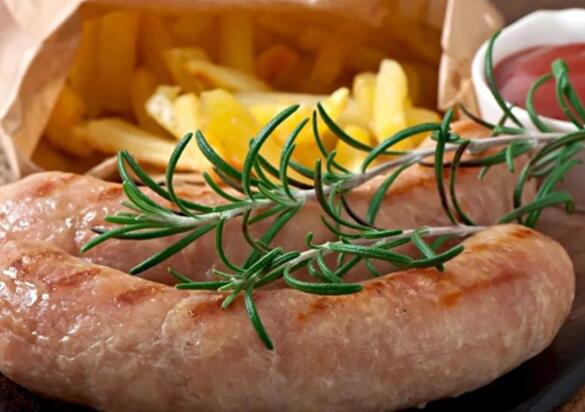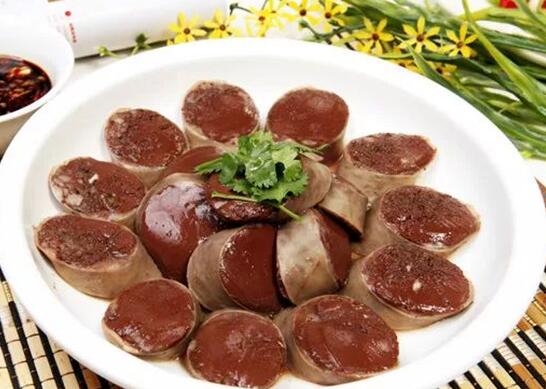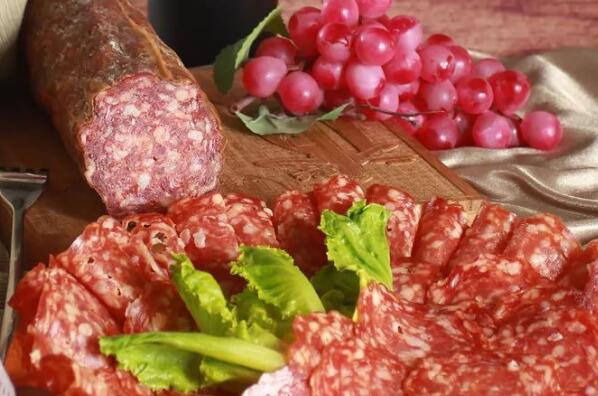There are so many types of sausages, can you really tell them apart?
Classification of sausage products
There are many kinds of enema products and different processing methods. From the perspective of the world, there is no unified classification method. Such as: German sausages are mainly divided into raw sausages, cooked sausages, cooked sausages. Over the years, in my country's meat processing industry, the classification method of sausages and enemas has generally been popular, that is, traditional Chinese sausages (represented by Guangdong sausages) are identified as sausages, and sausages introduced into my country from foreign countries in modern times are called sausages.
According to the raw materials used in the products, it can be divided into livestock sausages, poultry sausages, etc.; raw sausages and cooked sausages are divided according to the rawness of the products; southern sausages and northern sausages are divided according to the taste of the products; It is Beijing-style sausage, Su-style sausage, Cantonese-style sausage, Sichuan-style sausage, etc.; according to whether it is fermented or not, it is divided into fermented sausage and non-fermented sausage; according to whether it is smoked, it is divided into smoked sausage and non-smoked sausage; The degree of cutting is divided into minced meat sausage and emulsified sausage; in the United States and Japan, sausages are divided into fresh sausages, smoked sausages, cooked sausages, dried and semi-dried sausages. Here, we divide enema-type meat products into sausages and other types of enemas. According to the processing technology, sausages are divided into the following types.
1. Fresh sausage (also known as raw sausage)
The raw meat of this type of sausage is mainly fresh pork. The raw meat is minced and added with seasonings and spices, stuffed into the sausage casing, and preserved without nitrate and nitrite; Stored at ~4°C, the shelf life is about 2 to 4 days. It needs to be cooked before eating, so it is called fresh sausage. Such products include fresh Thuringian pork sausages, Kielbasa sausages, Bock sausages, etc.

This type of sausage is not only made of meat, but also mixed with other food raw materials, such as fresh sausages made of pig head meat, pig offal with potatoes, starch, bread crumbs, etc.; beef and eggs or bread crumbs or biscuit powder made of sausages; Mixed sausages of pork, beef, eggs and flour; tomato sausages made of pork, beef, tomatoes and pretzel powder; sausages of pork, beef, fat and rice flour, etc.
2. Cooked sausages
The finished sausage is made of marinated or unsalted meat, which is minced, seasoned, stuffed into casings, boiled, and sometimes slightly smoked. This type of intestine is the most common and accounts for a large portion of the entire enema production. In Europe, liver, lung, tongue, head meat, etc. of livestock and poultry are generally used as raw materials. Because these raw materials are easily contaminated by bacteria, they must be heated first, mixed with other seasonings, and then poured into casings, and then further smoked. Smoked and steamed. Typical products are liver sausage, blood sausage and tongue sausage.

Some of these products contain a large amount of collagen, which makes the products have good elasticity, texture and toughness.
3. Fermented sausage
Fermented sausage is one of the products with the largest output among fermented meat products, and it is the representative of fermented meat products. It uses ground meat (usually pork or beef) as the main raw material, adds animal fat, salt, sugar, spices, etc. (sometimes also adds microbial starter) and mixes it into the casing. After microbial fermentation and mature drying (or Meat products with stable microbial properties and typical fermented aromas made without maturation and drying. There are many types of fermented sausages, which are divided into coarsely ground sausages and finely ground sausages according to the shape of the meat filling. According to the amount of water lost during reprocessing, it can be divided into dry sausages, semi-dry sausages and non-dry sausages. The corresponding weight loss during processing is about 30% or more, 10% to 30% and 10%, respectively. Below, although this method is unscientific, it is generally accepted by industry insiders and consumers. The products are salami, dry Al sausage, scraken sausage and so on.

The pH of such products is very low, about 4.8 to 5.5. The products all have a bitter and acidic flavor, compact texture, good sliceability, suitable elasticity and long shelf life.
4. Smoked sausage
A type of sausage made from various livestock and poultry meat, minced, marinated and minced, then added with seasonings and spices, stuffed into the casing, smoked and heated (or unheated as raw sausage). It is the type of product with the largest production volume in meat processing plants. Such products are represented by Frankfurt sausages, Vienna sausages, and Harbin sausages.
The characteristics of this type of product are high elasticity, good sliceability, tight texture, water holding capacity and fat holding capacity far greater than other types of sausages.
Processing principle of enema products
Fresh sausages: not pickled, chopped and seasoned, stuffed into sausage casings, cooked when eating;
Smoked raw sausage: pickled or unsalted, chopped and seasoned, stuffed into the casing, and smoked.
Cooked sausage: pickled, minced or chopped, seasoned, stuffed into sausage casings, and cooked;
Smoked Sausage: Baked after enema, smoked after cooked;
Fermented sausage: smoked or not smoked after filling the casing, dried and fermented to remove most of the water;
Special products: made from some special raw materials, such as meat skin, oatmeal, liver, starch, etc., after stirring and adding seasonings;
Mixed products: products made from animal meat as the main raw material, plus fish, poultry or other animal meat.
Crushing, Mixing and Emulsifying
1. smash
(1) Concept: The process of changing raw meat from large to small through mechanical action.
(2) The role of crushing: improve the uniformity of the product; improve the tenderness of the product.
Equipment for crushing: meat grinder, emulsifier, chopper, slicer;
Degree of crushing: slicer > meat grinder > chopper > emulsifier.
2. mix
In order to dissolve and expand the meat protein, the additional stirring performed before further processing is called blending.
Premixing: The process of mincing and mixing the ingredients several hours before the batter is produced.
3. emulsification
(1) Concept: Muscle, fat, water and salt are mixed and chopped at high speed to form a meat paste with oil-in-water emulsification characteristics.
(2) Changes related to the formation of meat paste
① Protein swells and forms a viscous matrix; ② Emulsification of soluble protein, fat globules and water
Emulsion: A mixture of two immiscible liquids.
Type of meat paste emulsion: oil-in-water; dispersed phase: fat droplets; continuous phase: water containing soluble protein and other soluble muscle components, mixed with muscle fibers, connective tissue and their fibrous fragments.
Emulsifiers: Proteins (sarcoplasmic and solubilized myofibrillar proteins), myofibrillar proteins play a major role.
(3) Factors affecting the stability of meat paste
Matrix formation; emulsification temperature; fat particle size; pH value and quantity and type of soluble protein; viscosity of meat paste.
Process points of enema products
1. Selection and primary processing of raw meat
2. Pickled
⑴ Purpose:
Appears uniform pink; produces suitable saltiness; water retention and flavor.
⑵Conditions: 0~4℃, 24~72 hours
3, mincing pay attention to prevent the temperature from rising
4. Chopping
Order of chopping and mixing of raw and auxiliary materials: lean meat, ice, seasonings and spices, fat
Condition control: Final temperature: no higher than 16℃ for pig and beef, no higher than 12℃ for chicken, and the time is 6~minutes.
5. Pouring
The tightness should be appropriate, and the knot should be knotted.
Casing: PVDC casing, nylon casing, cellulose casing, etc.
6. Baking
Purpose: To denature the casing protein and make it firm.
7. Smoked and cooled
⑴ smoked
①Purpose
Give the product a unique smoky flavor; improve the color of the product; dehydration and sterilization, and enhance the preservation of the product.
②Condition: 50℃~80℃, 10 minutes to 24 hours
⑵ cooling
Conditions: 10℃~15℃ cold water, 10~20 minutes to room temperature, and send to 0~7℃ cold storage.
8. Labeling, finished products.
